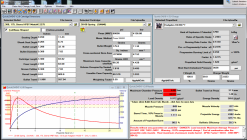Yes, Abe, it's not at all uncommon for one or more load sources to be outliers. But you're doing exactly what you should... consulting various sources and seeing where there is consensus and where there isn't.
my question is would starting at the max Hodgdon provided and loading down 10 loads in increments of .2 be safe as the max loads on other sites are that much lower.
When you encounter one of those outliers, you want to proceed with great caution. So to answer your question... no, I would not use the max Hodgdon load as a benchmark. The fact that their max charge is significantly higher than everyone else's suggests that
something in the way they did their testing was different. Unless you can identify what exactly that difference was, you're walking on thin ice.
Consensus is your friend. It tells you that different ballistics labs came to roughly the same conclusions.
Here's a QuickLoad print of the max Hodgdon load...

As you can see, it is several thousand psi over SAAMI max. Probably not enough to exhibit classic pressure symptoms, but, yeah, it's over max if the QL-default of 68.2 gr case capacity is anywhere close to accurate. My guess is that the Winchester cases used by Hodgdon have a higher case capacity than that 68.2 - which would then exhibit lower pressures. The other clue is the quite high 108% charge load density.
Case capacity matters. I'd measure a few samples of that Nosler brass of yours and see where it comes in. Knowing that is the starting point in understanding how high you can go with charge weight, and the resulting pressure and velocity you're going to have.
Absent knowing that - most handloaders don't - stick with consensus.











